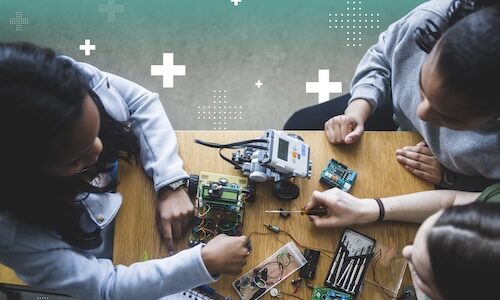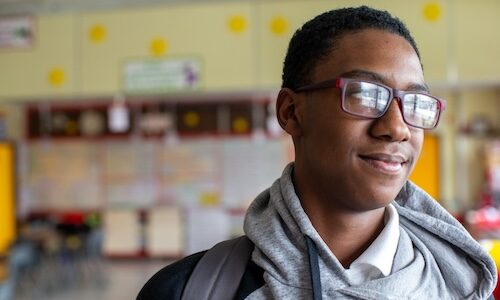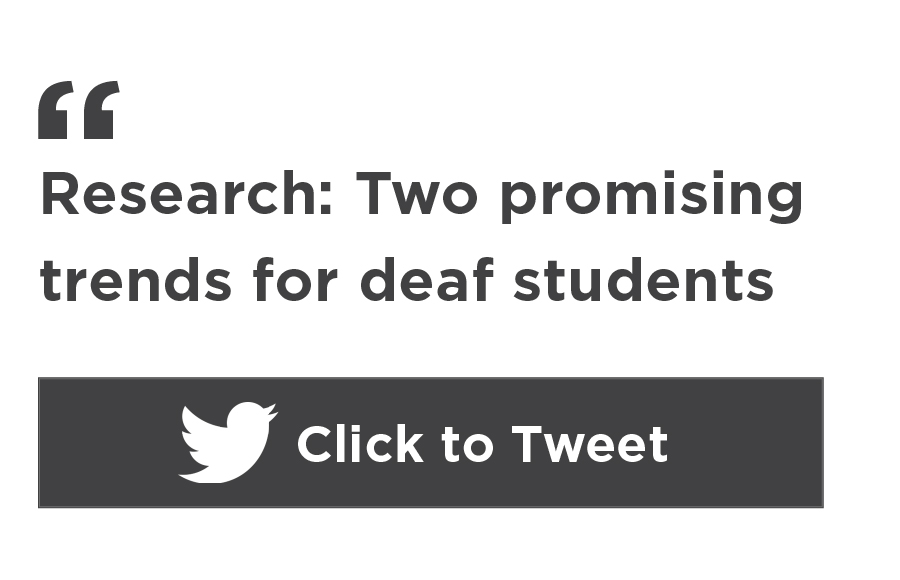As director of the National Deaf Center, I often hear the phrase “deaf people read at a fourth-grade level,” a belief that has long dogged the field of deaf education and our expectations of deaf students. This low bar of what is typical for deaf students can do a lot of damage; the “tyranny of low expectations” can lead to decisions that fail to challenge, support, and propel deaf students to reach their full potential.
The problem is that this belief is not only damaging—it is also not true. Recent research debunks this as a myth, showing that deaf people reach much higher than fourth-grade level and demonstrate a very broad range of achievement in English literacy—broader than the general-education population.
These facts are not meant to detract from the need to improve access for deaf people. There are many systemic barriers that contribute to consistent delays in academic achievement for deaf students as a whole: negative attitudes about what deaf people can achieve, lack of qualified, trained professionals, inaccessible learning environments, and resources that are few and far between. In addition, fewer than 10% of deaf children are born to deaf parents. Sometimes this results in reduced access to robust language in early childhood because hearing parents need time to learn how to communicate with their child. This language deprivation can have long-lasting effects even into school years, influencing not only learning outcomes but also critical development in identity, peer relationships, and mental health. We know that teachers need to think about the whole child, and that schools are an essential place to “level the playing field” for deaf children.
Understanding the term “deaf”
You may be wondering what I mean by “deaf.” When I use the word “deaf,” I mean the full range of the diverse population of students who may identify as Deaf, deaf, hard of hearing, late-deafened, oral deaf, and more. It’s important to acknowledge that as many as 50% of deaf people may experience a higher rate of additional disability than their peers. Deaf people also use a range of language modalities and communication approaches, which often look different across different settings and with different communication partners. For a helpful explanation, watch “What Does Deaf Mean?”
What data shows us about deaf students
For nearly 25 years, I have been working on issues related to equity and access for deaf students, particularly focused on what we know about academic achievement through standardized testing. This work has shown me the importance of both building a testing system that does not create artificial obstacles to students demonstrating what they know and understanding more about systemic barriers to deaf students reaching their full potential.
I was very excited to receive an invitation to work with NWEA on exploring data on deaf student achievement on MAP® Growth™ over the past decade. This is a very special data set because MAP Growth allows us to look at how students progress over time. Most research in the field can only take a snapshot of how students are doing in a single year, and we lose information about how they may progress from one school year to the next. MAP Growth is terrific because it is designed to measure progress over a student’s entire school career with a single metric.
I joined my colleagues, North Cooc, an associate professor at the University of Texas at Austin, and Johny Daniel, a lecturer at Boston University, in collaboration with the fantastic research team at NWEA on this study. We examined academic progress over time for approximately 350 K–8 deaf students. We did not have data for all students for all grades, so we relied on statistical modeling to use what data we did have to create estimates of trajectories for student progress across the entire group of students. In this study, we compared deaf students with a group of typically developing peers. The demographics are in the graph below.
There are two key findings that I want to highlight for you. These are really incredible findings!
1. Deaf students have strong text comprehension
Our first finding is related to text comprehension, an important literacy skill. The graph below shows that while there is a small gap between deaf and hearing students in the early grades, that gap soon closes as students approach middle school. You can see that there is virtually no difference in average MAP Growth scores by eighth grade.
If the myth about deaf people only reading at a fourth-grade level hadn’t already been debunked, it certainly is now. There is no slowdown in growth after early elementary grades; in fact, the rate of growth increases. This is very powerful information not only for English instruction, but also for subject areas that may rely on text comprehension skills—such as social studies—where students may need to access information through text-based materials.
2. Deaf students are making progress in math
Our second key finding is about geometry. As you can see, there is a small gap on MAP Growth scores between deaf and hearing students, one that remains fairly consistent through the grade ranges in this study. Students are making the same relative gains year to year, but because deaf students have more ground to cover, there is more for them to do to reach the same level as their peers.
I see these data as positive. Looking at the rate of growth, deaf students are developmentally on course, and they keep learning, without a plateau. This bodes well for potential learning trajectories in high school and beyond.
Continue to advocate for deaf students
There are limitations to any study, including this one. We were unable to break the findings down by race and ethnicity, by students who may have an additional disability, by language modality of instruction, or by other factors. My previous research has shown that average progress masks what can be very different trajectories for deaf students with different backgrounds. Without this breakdown, we cannot know more about what kinds of teaching approaches work better for students with each characteristic and in what settings. Because we still don’t have data to fully address systemic inequities that are prevalent in our educational system as a whole, the research community must continue studying this population of students.
But despite its limitations, this study has important advice to offer educators. First: teachers, keep doing what you are doing! Second: educators (and families), remember that test scores only tell a small part of the story about preparation for life after school.
It’s clear that the efforts teachers are making are worth it. MAP Growth data indicates that there is much reason to be optimistic and positive about the progress deaf students are making year to year. While our findings cannot make a causal link between specific teaching practices and student outcomes, the overall trends indicate that teachers are succeeding in supporting deaf students in their journey through elementary and middle school grades in the key content areas of reading and math. If you’re teaching deaf students online for the first time during COVID-19, I encourage you to take the National Deaf Center’s self-paced online course, “Teaching Deaf Students Online.”
Finally, as is often the case when we talk about assessment, it’s important to always come back to the big picture. While standardized test scores play a very important role in what we know about student learning and where to target our teaching efforts, test scores only tell a small part of the story about preparation for life after school. It is important to know that research shows that lower scores on standardized testing are not a death knell for deaf success in school, work, and life. When we think about what it takes for students—including deaf students—to reach their potential, we must keep our eye on the broader landscape of equity in education: equal access to early work experiences and on-the-job training; equal access to mentors and role models who can share tips on how to navigate the hearing world and find their path; equal opportunity not just to succeed, but to make mistakes, get feedback, and try again.












